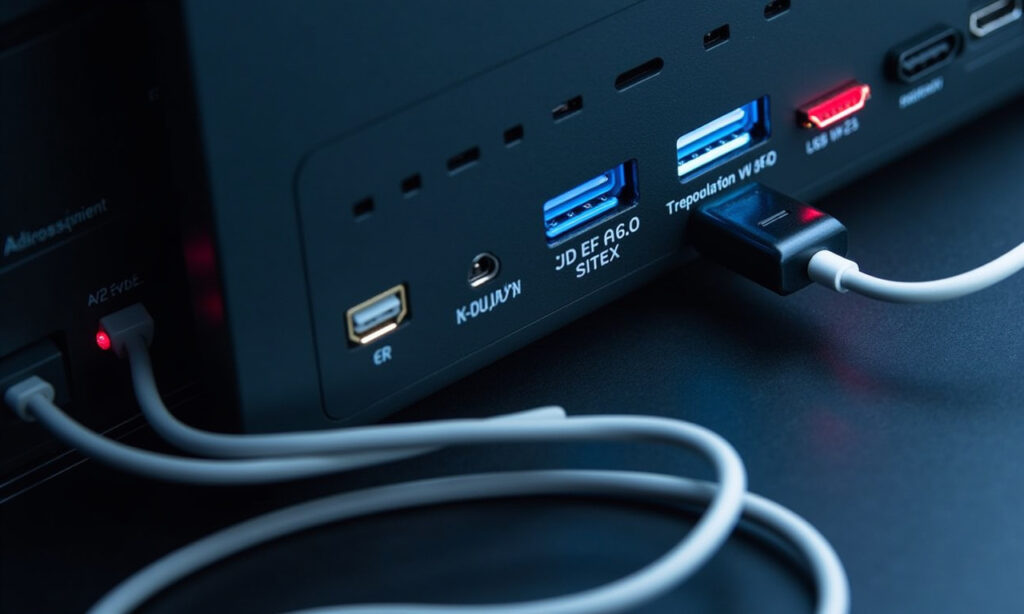The world of connectors is on the brink of a significant shift, and at the heart of this change is the versatile USB Type-C. With its increasing capabilities in data transfer, power delivery, and now video transmission, the question arises: will USB Type-C replace HDMI?
The Rise of USB Type-C
USB Type-C has evolved dramatically since its introduction. It has become a standard choice for high-speed data transfer and power delivery, widely adopted by modern smartphones, laptops, and even some monitors and TVs. The latest USB 4 version 2 boasts speeds up to 80 Gbps, enabling the transmission of high-resolution videos at high refresh rates, such as 4K at 120Hz[2].
Video Transmission Capabilities
USB Type-C can now transmit video and audio signals with high bandwidth coverage, thanks to the integration of DisplayPort specifications. Brands like Samsung and LG have already adopted the Alternative Mode to utilize USB-C ports for video signal transmission. This means that USB-C can handle tasks previously exclusive to HDMI, such as connecting devices to high-resolution displays and delivering smooth audio[2].
HDMI: The Current Standard
HDMI (High-Definition Multimedia Interface) has been the gold standard for audio and video transmission for over two decades. It comes in various types, including Type A, the most common and robust, used in TVs, DVD players, and gaming consoles; Type C (mini-HDMI), used in portable devices like DSLR cameras and tablets; and Type D (micro-HDMI), used in smaller devices such as mobile phones[1].
Limitations of HDMI
While HDMI excels in video and audio transmission, it lacks the versatility of USB Type-C. HDMI does not support power delivery, which means additional cables are required to power devices. This can lead to cable clutter and the need for multiple ports on devices[2].
Comparison: USB Type-C vs. HDMI
Here’s a comparison of the key features of USB Type-C and HDMI:
Bandwidth and Power Delivery
- USB Type-C: With the latest USB 4 version 2, it can deliver up to 80 Gbps of bandwidth and 240W of power, making it suitable for high-resolution video transmission and powering devices simultaneously[2].
- HDMI 2.2: Offers up to 96 Gbps of bandwidth but does not support power delivery. This means separate cables are needed for power, limiting its convenience compared to USB Type-C[2].
Compatibility and Adoption
- USB Type-C: Being adopted by more devices, including laptops and monitors, due to its multifunctional nature. It integrates data transfer, power delivery, and video transmission into one port.
- HDMI: Widely established but faces the challenge of evolving to match the versatility of USB Type-C. HDMI needs significant updates to stay competitive, especially in terms of power delivery and multi-functionality[2].
Practical Applications and User Experience
Simplifying Cable Management
USB Type-C simplifies cable management by combining multiple functions into one port. This is particularly beneficial for laptops, where the desire for a slim design often leads to a reduction in the number of ports. With USB Type-C, users can charge their devices, transfer data, and connect to displays using just one cable[2].
Enhanced Connectivity
For users, this means fewer cables and less clutter. For example, instead of using an HDMI cable for video, a USB-C cable can handle video transmission, data transfer, and power delivery all at once. This is especially convenient for laptop users who need to connect to external displays and charge their devices simultaneously.
Conclusion: The Future of Connectors
While it is unlikely that USB Type-C will completely replace HDMI in the near future, it is clear that USB Type-C is becoming a strong alternative. As technology continues to advance, the adoption of USB Type-C will likely increase, especially in devices where multi-functionality and convenience are paramount.
HDMI, however, is not ready to relinquish its throne yet. With ongoing advancements, such as HDMI 2.2, it still offers superior bandwidth for pure video and audio transmission. But as USB Type-C continues to integrate more features and improve its capabilities, it poses a significant threat to HDMI’s dominance.
In the end, it’s not a question of if USB Type-C will replace HDMI, but when and to what extent. As the tech landscape evolves, we can expect to see more devices embracing the versatility of USB Type-C, making it an integral part of our digital lives.
